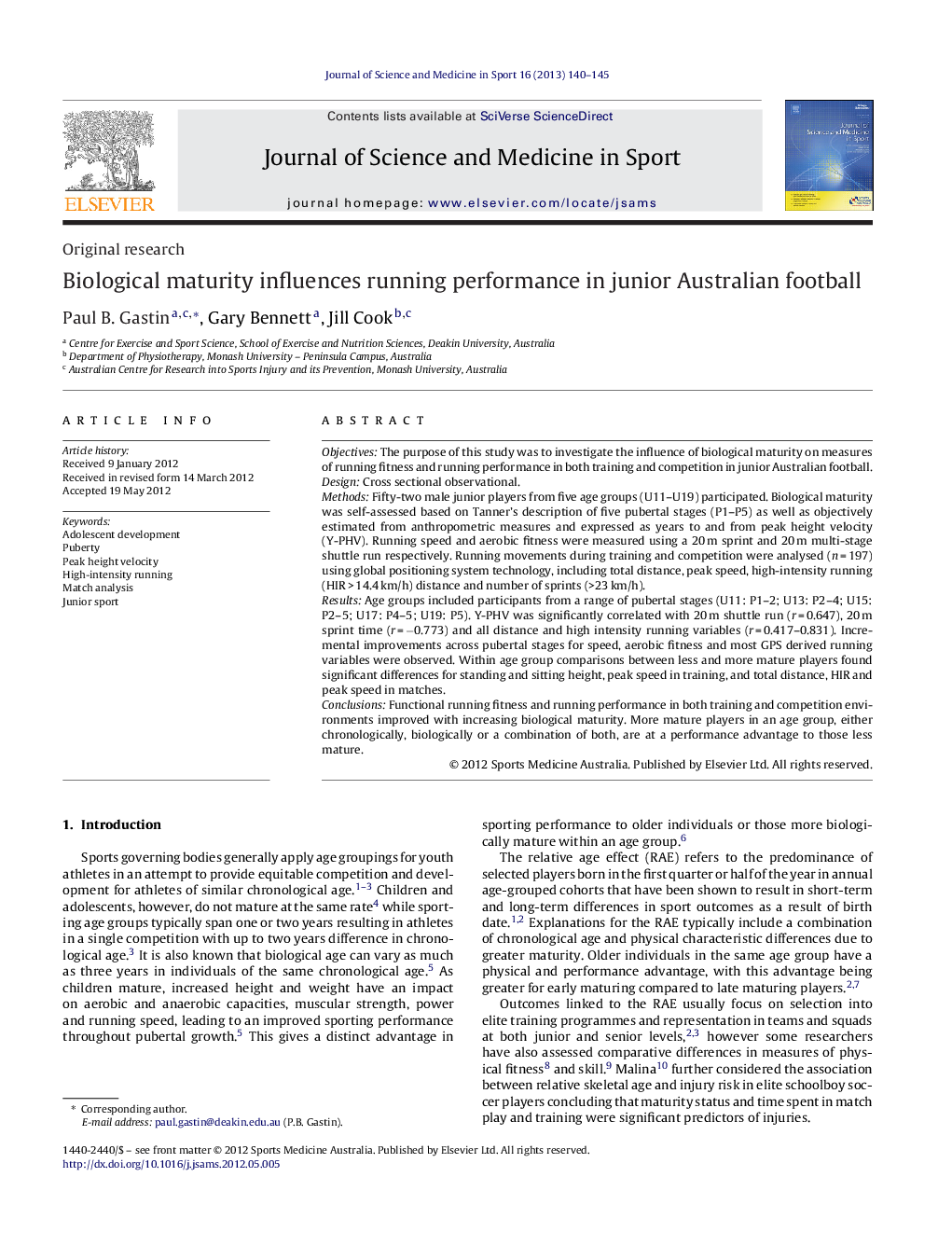| کد مقاله | کد نشریه | سال انتشار | مقاله انگلیسی | نسخه تمام متن |
|---|---|---|---|---|
| 2700676 | 1144359 | 2013 | 6 صفحه PDF | دانلود رایگان |

ObjectivesThe purpose of this study was to investigate the influence of biological maturity on measures of running fitness and running performance in both training and competition in junior Australian football.DesignCross sectional observational.MethodsFifty-two male junior players from five age groups (U11–U19) participated. Biological maturity was self-assessed based on Tanner's description of five pubertal stages (P1–P5) as well as objectively estimated from anthropometric measures and expressed as years to and from peak height velocity (Y-PHV). Running speed and aerobic fitness were measured using a 20 m sprint and 20 m multi-stage shuttle run respectively. Running movements during training and competition were analysed (n = 197) using global positioning system technology, including total distance, peak speed, high-intensity running (HIR > 14.4 km/h) distance and number of sprints (>23 km/h).ResultsAge groups included participants from a range of pubertal stages (U11: P1–2; U13: P2–4; U15: P2–5; U17: P4–5; U19: P5). Y-PHV was significantly correlated with 20 m shuttle run (r = 0.647), 20 m sprint time (r = −0.773) and all distance and high intensity running variables (r = 0.417–0.831). Incremental improvements across pubertal stages for speed, aerobic fitness and most GPS derived running variables were observed. Within age group comparisons between less and more mature players found significant differences for standing and sitting height, peak speed in training, and total distance, HIR and peak speed in matches.ConclusionsFunctional running fitness and running performance in both training and competition environments improved with increasing biological maturity. More mature players in an age group, either chronologically, biologically or a combination of both, are at a performance advantage to those less mature.
Journal: Journal of Science and Medicine in Sport - Volume 16, Issue 2, March 2013, Pages 140–145